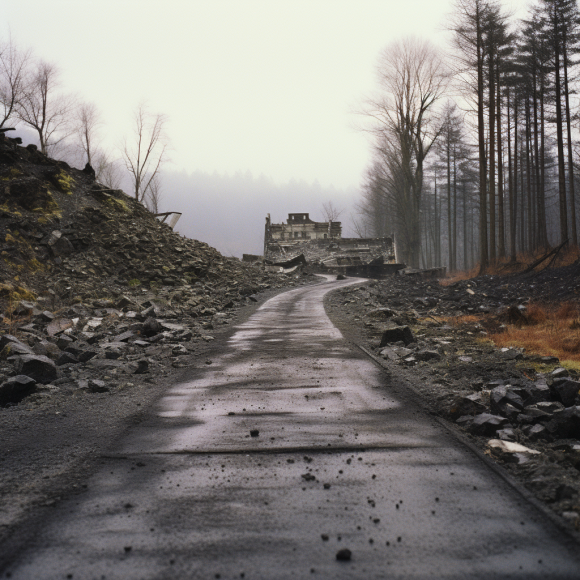Centralia, once a thriving mining town in Pennsylvania, now lies eerily uninhabited, bearing witness to a devastating underground fire that has been burning for several decades. The town’s tragic story serves as a cautionary tale of the destructive power of fire and the long-lasting consequences it can have on communities. In this in-depth article, we delve into the history of Centralia, the causes and effects of the underground fire, and the subsequent abandonment of the town. Join us on a journey through Centralia’s past and present as we explore the haunting aftermath of this catastrophic event.
The History of Centralia
Centralia, founded in the mid-19th century, quickly flourished into a bustling coal-mining community. Its strategic location atop rich coal deposits fueled its growth, attracting a diverse population seeking employment opportunities. The town witnessed prosperous times, with its population peaking in the mid-20th century. However, an ominous turn of events would eventually change the fate of Centralia forever.
The Unseen Threat Ignites
In 1962, Centralia’s underground fire ignited unintentionally in a local landfill located above an uninhabited coal mine. The fire, initially believed to be easily extinguishable, soon proved to be an unstoppable force. It rapidly spread through a network of interconnected mines, feeding on the vast coal deposits beneath the town’s surface. Efforts to contain and extinguish the fire proved futile, marking the beginning of a relentless and enduring catastrophe.
Environmental and Health Implications
The underground fire unleashed a host of environmental and health hazards upon Centralia and its residents. Toxic gases, including carbon monoxide and sulfur dioxide, permeated the air, posing severe respiratory risks. Sinkholes and ground fissures appeared, further destabilizing the town’s infrastructure. As the fire continued to burn, the land became increasingly unstable, rendering it inhospitable and dangerous.
The Slow Exodus
As the fire’s impact grew more pronounced, Centralia’s population faced an agonizing decision. In 1981, the federal government declared the town unsafe for habitation, and residents were urged to relocate. Over the years, many families complied, leaving behind their homes, memories, and a once-vibrant community. Today, only a handful of residents remain, refusing to abandon their beloved town despite the risks.
Centralia’s Legacy and Ongoing Management
Centralia’s legacy serves as a stark reminder of the devastating consequences of neglecting fire safety measures. The town’s plight sparked widespread attention and inspired discussions on responsible mining practices and underground fire prevention. Ongoing management efforts, including the construction of a bypass road and ongoing monitoring of the fire’s progress, aim to mitigate the risks associated with the disaster and ensure the safety of the remaining residents.



